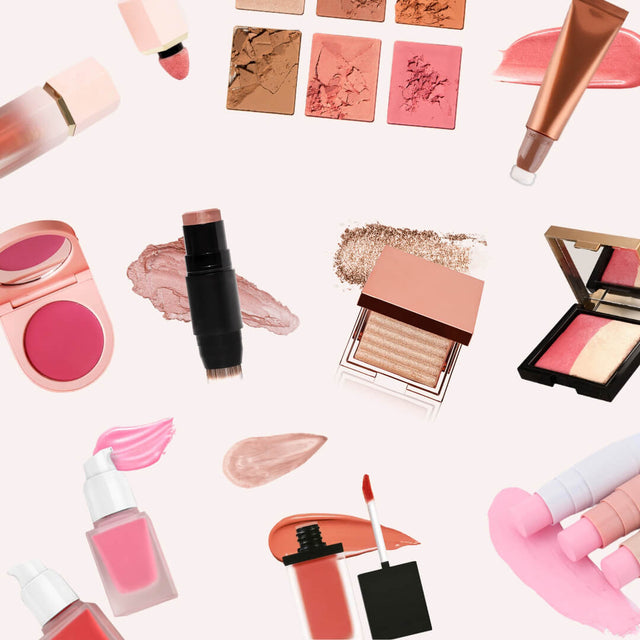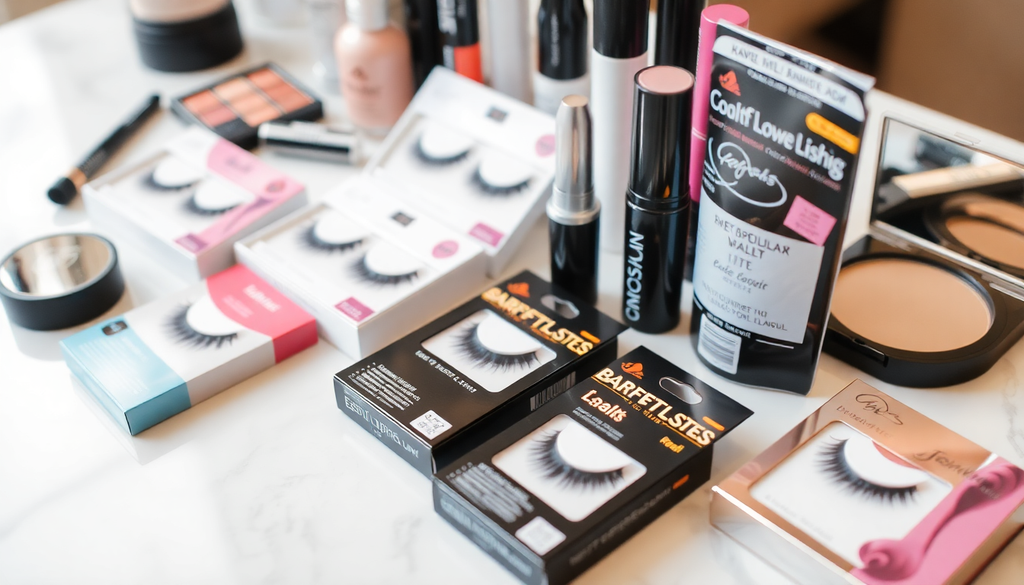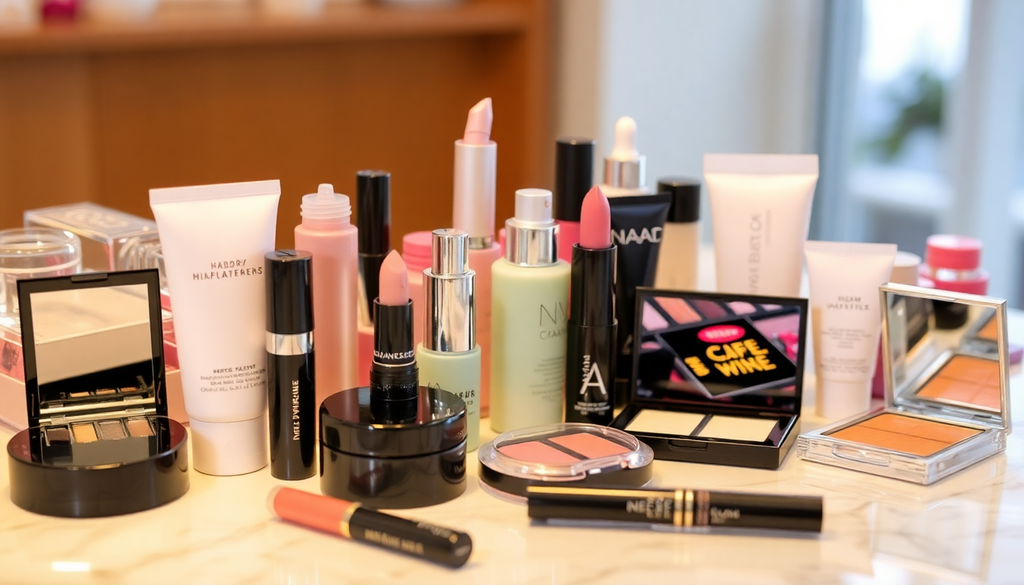
Essential Steps to Successfully Launch Your Private Label Makeup Brand: From Magnetic Lashes to Custom Eyeshadow Palettes in 2025
Introduction
In the dynamic world of beauty, private label makeup brands are carving their niche, offering unique products that cater to diverse consumer preferences. As we step into 2025, the landscape is ripe with opportunities, especially for those looking to create standout offerings like magnetic lashes and custom eyeshadow palettes. This comprehensive guide provides essential steps to successfully launch your private label makeup brand, ensuring you navigate the complexities of the cosmetics industry with ease.
Step 1: Conduct In-Depth Market Research
Before launching your brand, it’s imperative to conduct thorough market research to understand your target audience and the competitive landscape. This step will inform your product development and marketing strategies.
- Identify Your Target Demographic: Understand who your customers are. Consider age, gender, location, and lifestyle to tailor your products accordingly.
- Analyze Competitors: Study existing brands that offer similar products. Look at their pricing, product range, branding, and customer engagement strategies.
- Keep an Eye on Trends: Stay updated on the latest beauty trends, such as clean beauty, inclusivity, and innovative product formulations. Use tools like Google Trends and social media insights to gauge what consumers are excited about.
Step 2: Choose Your Niche Wisely
Establishing a clear niche will set your brand apart from competitors. A focused product line can help you target specific customer needs and foster brand loyalty. Consider niches like:
- Magnetic Lashes: A growing trend that offers convenience and reusability.
- Custom Eyeshadow Palettes: Allowing customers to create their own palettes can appeal to creative consumers.
- Eco-Friendly Products: Focus on sustainable packaging and formulations to attract environmentally conscious buyers.
- Specialized Formulations: Catering to specific skin types or concerns, such as sensitive skin or oily skin.
Step 3: Find a Reliable Manufacturer
Your choice of manufacturer will significantly impact the quality of your products. Look for manufacturers who specialize in cosmetics and offer private label services. Here’s how to find the right one:
- Research Potential Manufacturers: Use online directories and trade shows to compile a list of potential partners.
- Request Samples: Always request product samples to evaluate quality before making a commitment.
- Check Certifications: Ensure they comply with industry standards, such as Good Manufacturing Practices (GMP) and ISO certifications.
- Assess Communication: A good manufacturer should be responsive and open to discussions regarding customization and feedback.
Step 4: Understand Cosmetics Labeling Requirements
Cosmetics labeling is a critical aspect of product compliance and consumer trust. Regulations vary by country, so it’s essential to familiarize yourself with the requirements in your target markets:
- Ingredient Listings: List ingredients in descending order by weight. Ensure all components are approved for use in cosmetics.
- Claims and Warnings: Be cautious with claims like 'hypoallergenic' or 'dermatologist-tested'; ensure they are backed by evidence. Include necessary warnings, especially for sensitive skin products.
- Language Requirements: Ensure labels are in the appropriate language(s) for your target market, complying with local regulations.
Step 5: Navigate Import Policies and Regulations
When importing cosmetic products, there are multiple regulations to consider, including:
- Customs Duties and Taxes: Familiarize yourself with the import fees applicable in your country to avoid surprises.
- Import Permits: Some countries require specific permits for importing cosmetics. Research these requirements to ensure compliance.
- Safety Standards: Ensure your products meet health and safety standards set by regulatory bodies in your target market.
Step 6: Obtain Necessary Certifications
Certifications can enhance your brand's credibility and appeal to a broader audience. Consider pursuing:
- ISO Certifications: These are recognized globally and indicate quality management systems.
- Vegan and Cruelty-Free Certifications: These certifications attract consumers who prioritize ethical products.
- Organic Certifications: If applicable, this can broaden your appeal to health-conscious consumers.
Step 7: Build Your Online Store
In the digital age, a robust online presence is non-negotiable. Follow these steps to create an effective online store:
- Choose the Right E-Commerce Platform: Platforms like Shopify, WooCommerce, or BigCommerce can help you set up an aesthetically pleasing and functional store.
- Design for User Experience: Ensure your website is intuitive, fast, and mobile-friendly. A seamless shopping experience is crucial for customer retention.
- SEO Optimization: Use relevant keywords, meta descriptions, and alt tags to enhance your website’s search engine visibility.
- Integrate Social Proof: Display customer reviews and testimonials to build trust with potential buyers.
Step 8: Develop a Comprehensive Marketing Strategy
A well-thought-out marketing strategy is essential for brand visibility and growth. Consider the following channels:
- Social Media Marketing: Platforms like Instagram, TikTok, and Pinterest are ideal for showcasing beauty products. Use high-quality images and engaging content to attract followers.
- Influencer Collaborations: Partner with beauty influencers to leverage their reach and credibility. Choose influencers whose values align with your brand.
- Email Marketing: Build an email list to send newsletters, promotions, and product launches. Ensure your emails are engaging and personalized.
- Content Marketing: Create how-to guides, beauty tips, and product tutorials to establish your brand as an authority in the beauty space.
Step 9: Gather Feedback and Adapt
Once your products are launched, actively seek customer feedback to refine your offerings. Here’s how to gather and utilize feedback:
- Surveys and Questionnaires: Use tools like SurveyMonkey or Google Forms to gather structured feedback from customers.
- Monitor Reviews: Keep an eye on product reviews across various platforms. Respond to both positive and negative feedback to show customer engagement.
- Be Open to Adaptation: Use the feedback to tweak products, improve customer service, or adjust marketing strategies as needed.
Step 10: Build a Strong Brand Identity
Your brand identity is how consumers perceive your business. Invest time in creating a cohesive brand image:
- Logo Design: Your logo should be memorable and reflecting your brand's values. Consider hiring a professional designer for a polished look.
- Brand Colors and Fonts: Choose a color palette and font style that resonates with your target audience and conveys your brand's personality.
- Brand Story: Share your journey and mission. A compelling narrative can connect emotionally with consumers.
Step 11: Plan for Distribution
Consider how you will distribute your products. Options include:
- Direct-to-Consumer: Selling directly through your online store allows you to control the customer experience.
- Retail Partnerships: Explore opportunities to stock your products in local beauty shops or larger chains.
- Online Marketplaces: Platforms like Amazon or Etsy can expand your reach but may come with additional fees.
Step 12: Monitor Your Progress and Set Goals
As you launch and grow your brand, continuously monitor your performance and set actionable goals:
- Track Key Metrics: Use analytics tools to track website traffic, sales, and customer engagement.
- Set Short-Term and Long-Term Goals: Establish measurable objectives for sales, customer acquisition, and brand growth.
- Regularly Review Strategies: Periodically assess your marketing and product strategies to ensure they align with your goals.
Conclusion
Launching a private label makeup brand in 2025 is an exciting opportunity filled with potential. By following these essential steps—from conducting thorough market research to building a strong online presence—you can create a brand that not only stands out but also resonates with consumers. Remember, adaptability and continuous improvement will be key to your brand's long-term success in the ever-evolving beauty industry.




